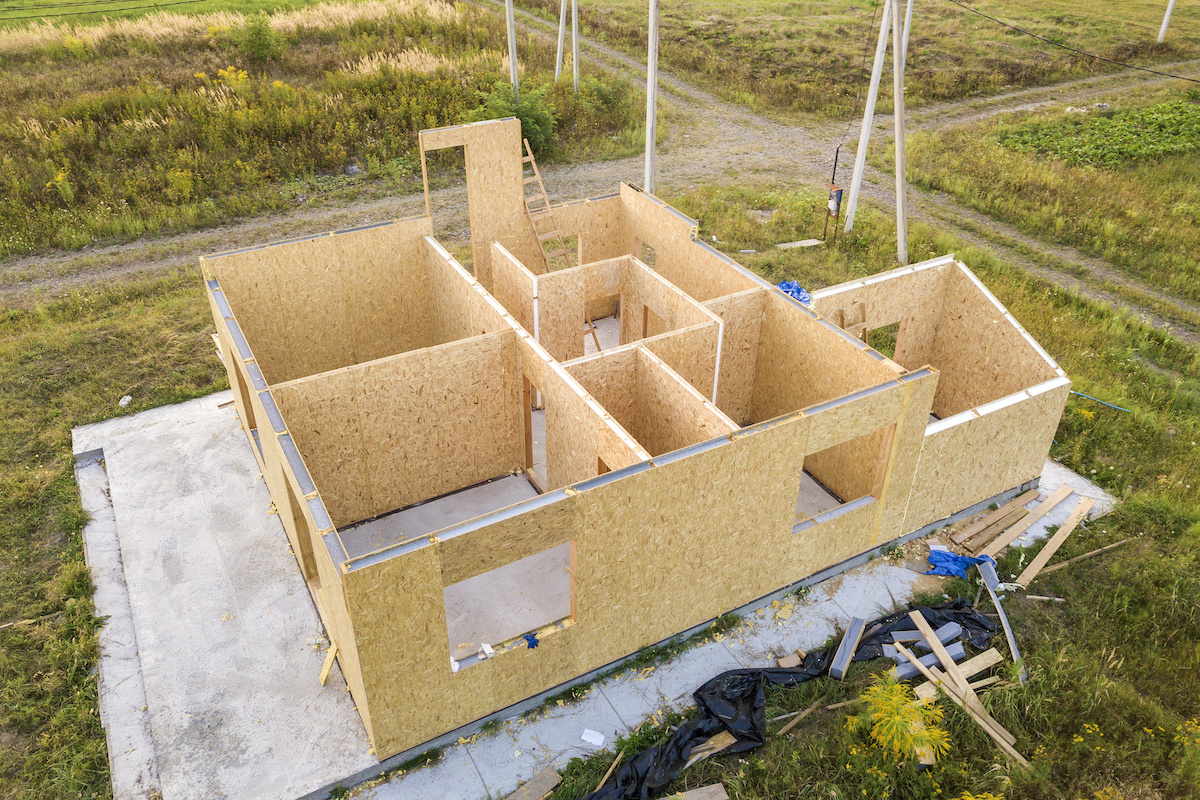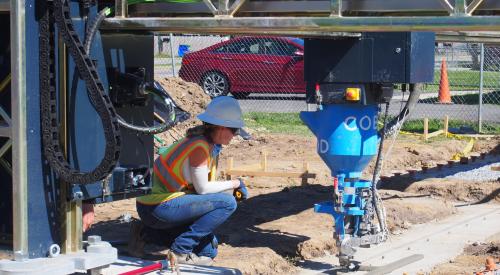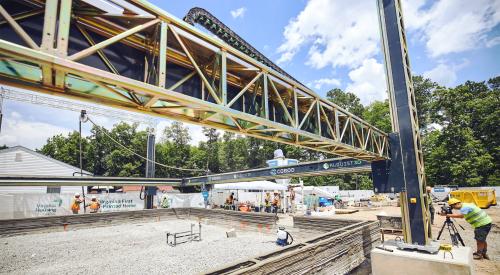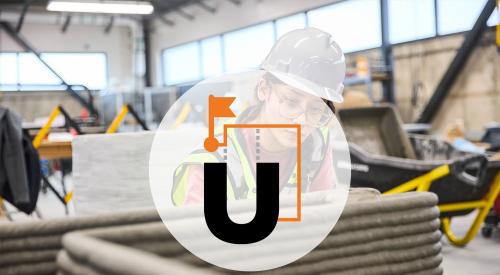Off-site construction methods are nothing new, but new advancements and upcoming housing projects hint at a tech-forward future. Pair that with the pandemic and resulting supply chain shortages and the current climate of home building begs the question, 'How can this be improved?' In the Northern Virginia suburbs of Washington, Van Metre Homes will erect modular townhomes fit with ductless HVAC systems, energy control panels, electric vehicle charging stations, and induction cooking. In Richmond, 3D printing home company Alquist will print a 1,550 square foot home to be sold at $210,000 and erected in less than 15 hours, reports the Miami Herald.
In this house, Alquist printed only the exterior walls, but the company says it will also build interior walls in future houses.
Concrete construction isn’t new, either. But only 8% of new houses are concrete-framed, whereas 91% are wood-framed, NAHB reports. (The other 1% are steel.) Builders shy away from these and other methods largely because they can’t find experienced workers. They also cite cost as an issue. But with the cost of lumber so high, that could be changing.
Whereas most 3D-printing construction endeavors have focused on urban areas, Alquist is taking particular aim at rural locations — many of which face even greater affordable housing challenges than big cities. The company, which also is working with Habitat for Humanity, intends “to build homes for people who live outside of the places where most funding for housing programs is spent,” said CEO Zachary Mannheimer.
Elsewhere, ICON, an Austin, Texas-based company that uses a giant 3D printer and concrete as a substrate, has built six such houses in a 51-acre master-planned property. And in Rancho Mirage, California, Mighty Buildings, in conjunction with a local developer, will put up 15 houses that are built in panels. The panels will use a polymer material comparable to synthetic stone, and will be assembled at the site.
“In early 2018, there were no 3D-printed houses in North America,” said ICON CEO Jason Ballard. “Now we’re gearing up for hundreds.”
Selling is changing, too, with at least two major builders going far beyond 360-degree video tours. Now, you can design and buy a house completely online without ever leaving the comfort of your living room. With the new reservation system from Taylor Morrison, the nation’s fifth-largest homebuilder, customers can choose a floor plan, select a home site using an interactive map and reserve the house — all online.












